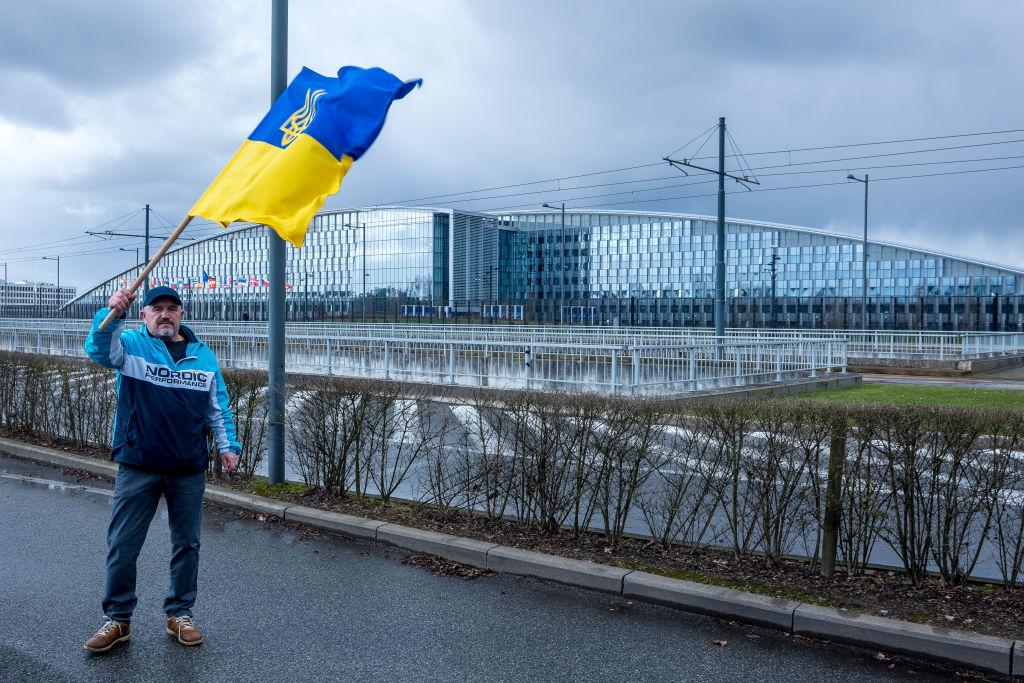
NATO allies have pledged to send additional lethal aid to Ukraine and will strengthen the alliance’s Eastern front in the face of Russia’s invasion of Ukraine.
More than 20 nations pledged to provide weapons, equipment, fuel and medical aid to Kyiv after a NATO meeting of heads of state on Feb. 25.
With Ukrainian troops facing air attack from Russian combat aircraft and helicopters, urgent calls for man-portable surface-to-air missiles have been heeded by Western allies, with more than 700 Stinger missiles pledged.
Of these, some 500 will be provided by Germany, which had until now been opposed to the sending of so-called lethal aid, having originally planned to send a consignment of helmets.
An additional 200 Stingers are being provided by the Netherlands.
German Chancellor Olaf Scholz said the Russian invasion had marked a turning point. “It is our duty to support Ukraine to the best of our ability in defending against Putin’s invading army,” he said on social media.
Berlin is also providing more than 1,000 anti-tank missiles, with the Netherlands providing Panzerfaust 3 launchers and missiles.
The U.S. State Department said President Joe Biden approved an additional $350 million dollars in assistance, including more Javelin anti-tank missiles.Previous deliveries have already been used successfully by Ukrainian troops in dealing with Russian main battle tanks and armored vehicles. The State Department said the latest package would “help Ukraine address the armored, airborne, and other threats it is now facing,” but officials did not provide details on other elements of the assistance package.
The UK said it would provide humanitarian and military support, including ammunition and anti-tank weapons, and would also conduct logistics operations to support the delivery of donations.
Meanwhile, the Czech Republic said it will provide small arms. Neighboring Slovakia is providing artillery rounds and millions of liters of diesel and aviation fuel, while Poland has been supplying undisclosed types of ammunition. Denmark is providing body armor and first aid equipment.
Other nations have promised weapons and equipment but have not yet declared specifics.
NATO members have also responded to the Article 4 request made by Bulgaria, the Czech Republic, Estonia, Latvia, Lithuania, Poland, Romania and Slovakia for additional NATO forces on their soil.
As part of the request, several NATO countries including France, the Netherlands, the UK and the U.S. have been performing combat air patrols in the skies above Poland near the Belarus border.Additional fighters have also been sent to Romania by Germany and Italy to enhance that country’s air policing mission. France has also announced plans to send Mirage fighters to Estonia in mid-March and will reinforce a garrison there with 200 additional troops on top of 300 already there. Germany is planning to send a Patriot battery and soldiers to Slovakia. Italy announced it was mobilizing its forces for NATO’s Very High Readiness Joint Task Force and would beef up its presence in Romania with additional fighters, a tanker and an intelligence, surveillance, and reconnaissance platform—potentially one of its two Gulfstream G550 conformal airborne early warning platforms. Meanwhile, Denmark has pledged to NATO commanders up to 20 of its F-16s, as well as transport aircraft and a frigate. The UK has sent additional Eurofighters to a base in Cyprus, from where they are conducting combat air patrols over Romania.
Meanwhile, European Union foreign ministers were expected to meet virtually on Feb. 27 to discuss a package of emergency assistance for the Ukrainian armed forces.





